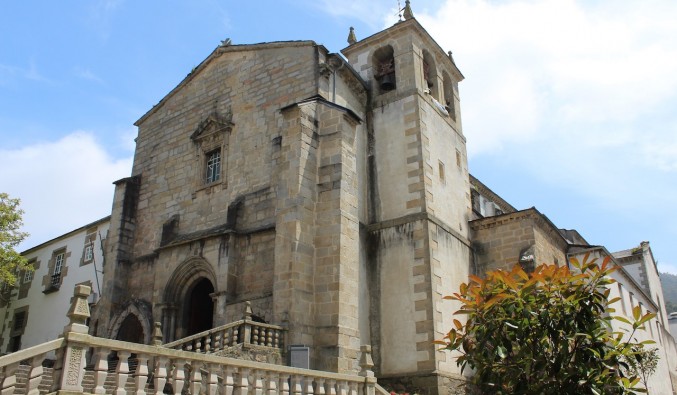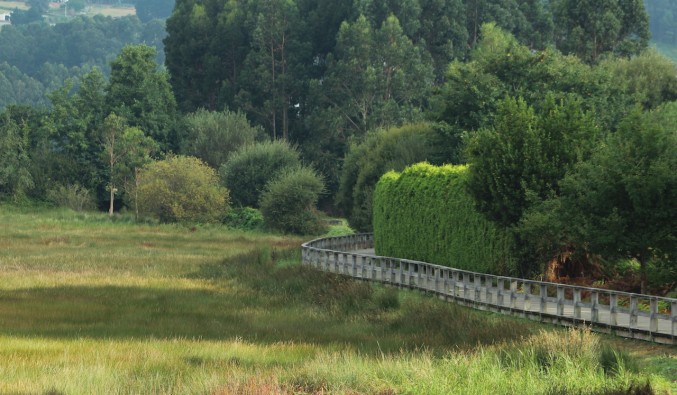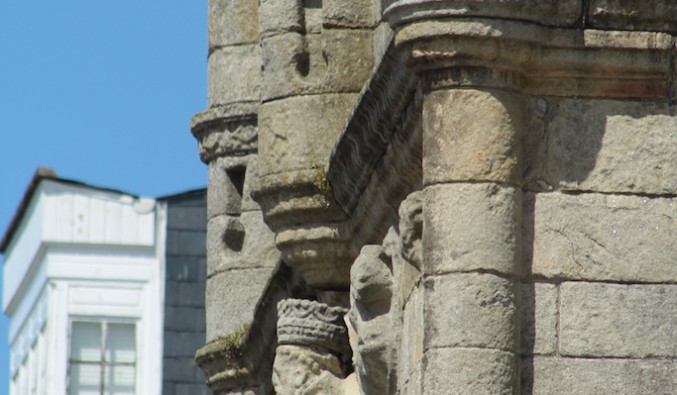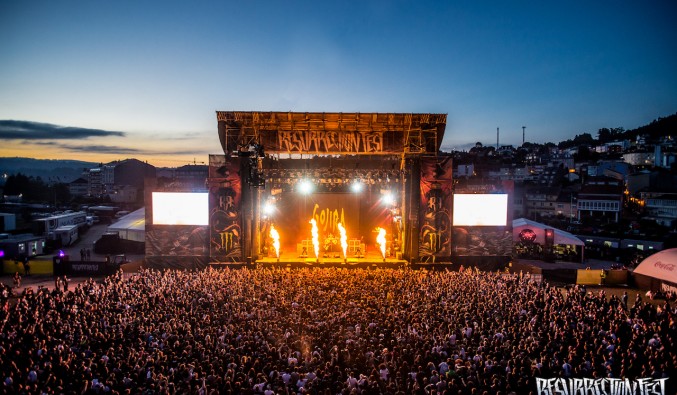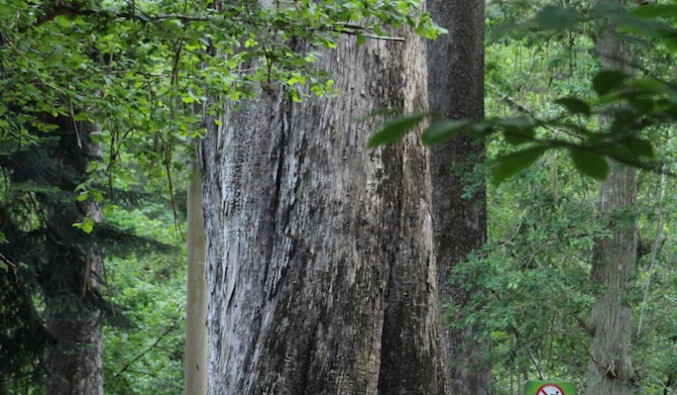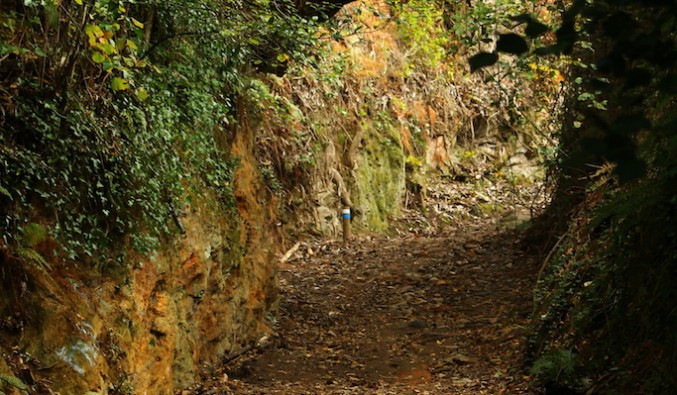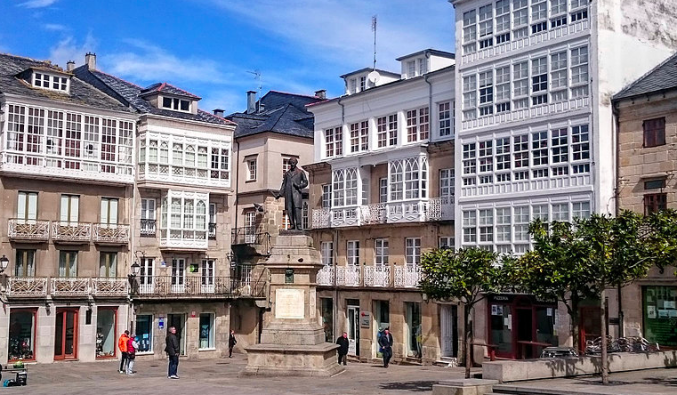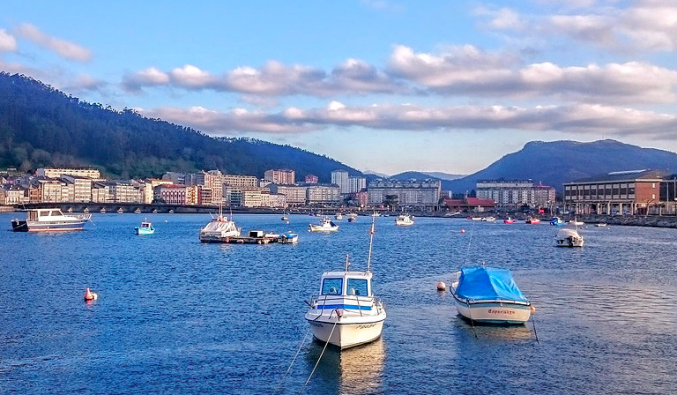Description
GET TO KNOW VIVEIRO
A serene city in the north of Galicia. A fabulous place to take a stroll during the day, get to know its natural envirnonment, its heritage or to chill out at night.
Viveiro assures tourists and visitors that they will always eat well, not just in its renowed restaurants and rural houses, but also in its numerous inns, bars and beach stands which have outdoor terraces, where you can taste good wine or beer accompanied by abundant tapas made with our finest and outstanding quality products such as seafood, fresh fish meat and vegetables.
Viveiro´s charm and beauty is worth visiting . This city is more than 900 years old, tourists can stroll in its great city centre and discover monuments such as Puerta de Carlos V, Porta da Vila and Porta do Valado, three out of the six preserved gates that from part of the old town´s walls; the parish churches of Santa María and San Francisco-Santiago, the secluded squares and steep streets belonging to different guilds such as Zapatería, Pilitaria, Ferreiros, do Forno, Pescadería. Its popular architecture cannot go unnoticed either; its stunning houses with their corridors, balconies, and glazed galleries with the estuary creating a spectacular image mirroring its beauty.
Viveiro´s festivals, “romerias”, traditions and countless events such as Easter, which has been declared a Festival of National Tourist Interest, the Resurrection Fest and the Romaría do Naseiro are wonderfully unique.
Viveiro´s rich and various landscapes leave visitors in awe of its natural coastline leave visitors, valley and mountain views, a delight for everyone who enjoys nature.
The sea breeze which softly blows through Viveiro is like a breath of fresh air that fills people and our environment with clean positive energy. Both travellers and tourists, who are dehydrated from the sun, feel like they are dreaming in this salty and fresh climate, while they take a stroll, barefoot along the beach, sinking their feet into the thin sand that experts a masterfully soothing effect.
Therefore, EXPERIENCE VIVEIRO, colourful world, sensations, emotions and flavours that allow us to enjoy each and every one of the leisure and entertainment activities that this centenary and cosmopolitan city has to offer.
Enjoy its history
The great amount of prehistorical megalithic monuments and Iron Edge settlements in the region, together with the Roman remains of Viveiro and Area, prove how old the city is. Although the
first documented references from the Vivarii land are dated in the year 857, its origin as military trade centre is thought to be between 1190 and 1210; in a period when commerce was reactivated in Atlantic Europe, once it had recovered from attacks by the Normands and Muslims.

In the Middle Ages the port of Viveiro became an important nexus of connections between the Cantabric populations and the ports of Normand or Atlantic Europe (Bruges-Damme, Gascony, Flanders, England, La Rochelle, Dieppe, Bordeaux, Porto, Lisbon, etc.) As trade grew, the city began to develop with the building of the main bridge, the defensive gates, the walls, churches and convents of the Mendicant orders (Franciscan and Dominican), the hospitals and markets.
Viveiro´s commercial edge was wine monoculture, fishing and all type of goods nobility that entered or left the port. The upsurge of the four existing guilds resulted in the rise of an emerging burgeoisie, who, in many occassions would face the domain of Mondoñedo Bishops and chivalrous nobility (the Andrade, Pérez das Mariñas, Pérez de Viveiro, Pardo de Cela, etc.)
During the outbreak of the “Revueltas Irmandiñas” in the Kingdom of Galicia, where regional nobles tried to mantain the rights over the peasantry and the bourgeoisie, the people of Viveiro played an active role and later, during the war of the Spanish succession, the “Queen Isabel La Católica” extended her authority and incorporated the town into her domain (1475).
The 16th and 17th centuries were especially hard, due to a series of negative events that threatened the economicboom of the town: fires, bubonic plagues, pirate attacks, floods…
In the 18th, 19th and 20th centuries, the industrialization process began with the presence of catalan entrepreneurs, the birth of the Sargadelos industry and the exploitation of the Silvarosa mines helped the development of other sectors.
PUERTA DE CARLOS V OR CASTELO DA PONTE
Its construction began in 1598, to replace an older one. Made by Pedro Poderoso. It had a memorial character and it was set up as an exemption of taxes to the town till it was reconstructed as it had been destroyed in the fire in 1540. The facade features three different bodies, the opens a spectacular semicircular arch with the coats of arms of Galicia and Viveiro. In the second body it is outstanding the imprerial coat of arms crowned with the emperor´s bust and flanked by four medallions that the lineage of the villa´s founders.
The ensemble is finished with an artistic cornice, parapet, portholes and decorated battlements. (Declared Official Asset of Cultural Interest and Historical Monument).
PUENTE MAYOR OT PUENTE DE LA MISERICORDIA
This is a very long bridge, and according to historical documents, it has existed since 1225, although its reconstruction began in 1462 during Enrique´s reign and finished in 1544 under Carlos V´s orders. It currently conserves nine visible arches out of the initial twelve, due to continous expansions and later modifications that altered its original aspect. It served as a pier and as a loading and unloading dock with a crane. Here you can find the well-known “Cruz do Rollo” and the end o it the Ecce Homo Chapel and the Pazo da Misericordia.
CONVENT CHURCH OF SAN FRANCISCO
The San Francisco Convent and church are located on the outskirsts of the old wall enclosure. It belonged to the Franciscanas and it is believed to have been founded in 1219. The cloister preserves two beautiful Roman arches on the main outline; the most current one is thanks to Diego Ibáñez Pacheco (1645).
The church (14th Century) is a oval style on its apse, transepts, with different details in the wing. The front of the building has two arches from the original entries of the chapels of San Luís, the Bishop pf Tolosa. patron of the sailors and San Juan Bautista (with mural paintings in a Gothic style from the 15th Century)
Inside, the chapels of San Idelfonso (14th Century) and Venerable Orden Tercera (18th Century) have interesting altarpieces depicting the International Easter. The arcosolia and tombs of Beata Constanza de Castro and Nicomedes Pastor Díaz (1923) are also worth seeing .
The gothic style apse (14th Century) is considered one of the most graceful ones in Galicia, and was restored in 1965 (Conjunto H. Artístico Nacional)
SANTA MARÍA´S CHURCH
A Roman Church from the 12th Century with a basilica appareance, it has three wings, three facades and an apse with a straight passage. In the church, over the interior tympanum of the northern entrance you can find the artistic group of sculptures of La Piedad (16th Century), which were originally from the demolished puerta de las Angustias. At the end of the wing you can find the interesting baptismal font with biblical reliefs.
It is also worth highlighting the gothic, ogival chapel of San Gregorio (1468), with the sepulchral arches of the founders and the chapel of la Virgen del Rosario (16th Century).
The apse has a curious series of dogs corbels symbolising lust and the capital sins (Monumento y Conjunto histórico Artístico Nacional)
CONVENT OF LAS CONCEPCIONISTAS AND GROTTO OF LOURDES
The Convent of las Concepcionistas was built in 1725 by will of María de las Alas Pumariño and it was ruled by cloistered nuns. The gate and the main access to the convent are remarkable; pastry can be ord Pazo oered here. Inside there is a large three-floor cloister with arches on the ground floor.
It is an interesting chapel open to worship, with beautiful tombstones and other artistic elements. The Grotto of Lourdes is a recreation of the french one in honor of the Virgin and it was built in 1925. The numerous wax motives offered in gratitde for human and anima healing are striking.
CALEXA DAS MONXAS AND PORTA DO VALADO
The Calexa das Monxas separates the Concepcionista´s convent garden, where the old chapel of S. Martiño Rua Cuberta was, for the urban Pazo of the Sotelo Valledor family.
The “Porta do Valado”is one of the six ancient medieval gates that the town had, currently there are only three, next to it there is the best kept wall of the town, in addition to important medieval archeological remains.
PORTA DA VILA
A simple half-point arch with a canyon vault that served as an entrance to the so-called Camino Real. It preserves the oldest epigraphic inscription, carved in stone, in Viveiro that says:
ERA: M: CC: LV It was 1255 (year 1217)
IN TEMPO AF: in the time of Alfonso (King Alfonso IX)
Inside the above door, it still maintains a modern wooden dressing room with the sculptural group of Cristo del Amparo. Next to this door, you can find the Fonte del Cadalso (17th Century) which was opposite the monastery of Santo Domingo, demolished in 1851.
FACADE OF CASA DE LOS LEONES
This is the facade of a lavish late-Renaissance building 17th Century, which does not exist anymore. Its name comes from the two large stone lions that appear on both sides of the coat of arms of the Ponte Prada family, neighbours of Ferrol. In 1987 it underwent remodelling, losing interesting architectural elements such as the gallery facing the sea and a spectacular stone staircase.
PLAZA MAYOR (MAIN SQUARE)
The Plaza Mayor is formed by various eclectic buildings which all have elements of the northern architecture in common: slate roofs, wrought iron balconies, glazed galleries and granite or masonry walls.
It underwent various modifications over time, when the parish church of Santiago (1840), the pillory, the Prison and Casa de los Corregidores (1874) were demolished. Afterwards it enlarged its Zocas and the old Camino de Santiago (1840), the pillory, the Prison and the Casa de los Corregidores (1874) were demolished. Afterwards it enlarged its perimeter and two cantons were constructed: Das Zocas and the old Camino de Santiago. The statue of the writer and politician, Nicomenedes Pastor Díaz was erected in 1891; it was designed by the Catalan, J. Campeny, and was recently relocated elsewhere in the square.
It is also worth looking at the artistic declining sundial of the Old Town Hall, which represents the greatest bridge and the passing lion of Viveiro´s coat of arms; work of J. Sarmiento. There is also an equestrian Santiago, carved in stone in the corner of the house at Number 2, P. Díaz Street.
LA MISERICORDIA CHAPEL OR ECCE HOMO CHAPEL
The Capilla de la Misercordia or the chapel of Ecce Homo was funded in 1603 by Rodrigo Alonso Alfeirán, and was rebuilt in 1648, 1791 and 1800. It is of the Renaissance style.
The neoclassical altarpiece of Asunción de la Virgen, of the High Altar, and the historical frescoes of the dome on the life and miracles of Beata Constanza de Castro, by Camilo Díaz Baliño (1917) asre exquisite.
The popular image of Ecce Homo is situated and worshipped in the right-hand side altar, which many devotees visit on the first Friday of March, “Day of the Three Graces”,and make three wishes. Adjacent to the chapel is the Pazo de la Misericordia.
CHURCH OF SAN PEDRO
In the surroundings of the Church, you could find the Castro da Torre, however it is no longer there. It was built in the 9th Century, enlarged in the 12th Century and refursbished in the 17th and 20th Century, folowing a very pure Romanesque style.
It is lateral stones side walls, with varied corbels on the eaaves, in which two of them represent women´s and men´s sex organs, are also striking. In the apse, along the eaves, there is a cord anda rossette carved on the central window, as well as curious corbels, whcich attract a lot of attention. Inside, you can findthe batismal font, different altarpieces and interesting epigrahpic inscriptions on the left side wall. It is classified as Heritage of Cultural Interest (BIC).
MONASTERY OF VALDEFLORES
The convent was converted into a monastery under the rule of Santo Domingo, 1406. The temple is Gothic Style. It was rebuilt in the 18th Century and recently restored. In it we can find an alabaster image of Our Lady of Valdeflores, who according to legend, appeared in the exact same spot. What also stands out is the beautiful cover of the South side wall, of an ogival style with the Romanesque capitals, crowned with a stone image of Santo Domingo, work of Sarmiento which originally formed part of the ruined convent of Dominicans.
The Dominican cloistered nuns offer the public a varied assortment of sweets and pastries.
CALLEJÓN DEL MURO
An old passage that run along the wall. Some authors though this to be the Jewish area of Viveiro in the past.
In the old town buidings such as Casa Torre del nº 26 of Rosalía de Castro Street are well preserved, with a wide arch, large segments and J. Ares Vizoso coat of arms (16th century) or Irmáns Vilar Ponte´s home at No 7, with its artistic balcony of the Royal Factories of Sargadelos. There are “guild” streets of interest such as “Zapatería” “Ferreiros” and “Pescadería” (Luis Trelles) there are also quiet squares like the Fontenova (Do Forno) and of La Hierba (Four Bloodlines). The neighbourhoods of Xunqueira, Covas and Celeiro are also interesting . There is a eich “Indiana” architecture inland.

BREATHE NATURE
Viveiro´s vastly diverse landscape and natural resources makes it a great place for all kinds of trips and surprising visits. The fusion between the sea, the valley and the mountain open infinite posibilities for creating an itinerary or short gateway. Any visitor can discover an enjoy the most paradis-like places just by walking.
MONTE FARO ROUTE (194 M.)
Located 194 metres above sea level in the Area-Faro parish. It is considered to be one of the best viewpoints of the ría (estuary) , and it also has a magnificent views of Area Beach and its granite villages. It preserves the remains of an old coastal surveillance gate-house to prevent attacks by the sea. The former church with its cemetery is also interesting. It is possible to take this route starting from area beach or from Esteiro beach in the opposite direction.
MONTE SAN ROQUE CLIMBING ROUTE (353 M.)
It is 353 metres above the sea level, it has a magnificent view of the ría and the estuary of Landrove. The chapel dedicated to the co-patron of Viveiro, San Roque who rid the town od “plague and evil” during the late Middle Ages is at the top. It features a recreational area with picnic tables, grills fountains, a playground, natural wildlife , reserve and all type of services. A few metres from the chapel, between some crags, the cave is topped with a cross, where according to tradition the Saint of “Montpellier” appeared.
PENEDO DO GALO ROUTE (550 M.)
A 550-metre high, breathtaking panoramic viewpoint. To get this mountain, you must go up a track that exists an intersection just before reaching the top of San Roque. Then take three other turns to the left around mountaintop.
MONTE CASTELO ROUTE (484 M.)
The Landrove Valley, 484 metres above the sea level, has spectacular granitic masses and a chapel dedicated to St. Martin Dumiense. It has good access from the road Lugo-Viveiro in Redoada. It offers one of the most stunning view of the Landrove Valley and ría. Father Baltasar Merino studied its flora and included included it in his “Flora de Galicia” (1905) book. The granite blocks carved naturally by erosion are a focal point; one of them, near the chapel, has three basins carved into the stone, which according to tradition have healing properties, especially for diseases of the eye, ear and head.
MONTE DE LA SILVAROSA ROUTE (441 M.)
The old mines of phosporous iron were situated in the Silvarosa territory, and were exploited by the German company “Viveiro Cª Iro Ore Ltd” (1884-1919), which were then passed on to Horacio Echevarrieta, J. Barro and Ensidesa who closed them in the early 70s. From the top and several viewpoints, there are beautiful views, of the Leandro estuary, Covas beach and the Ría. Numerous remains of the industrial heritage are preserved, for example the minning town, quarries, wells,etc
MUIÑOS DE XUNQUEIRA (MILLS) ROUTE
A circular route from Viveiro by the river Fontecoba leading to Xunqueira (As Aceas). This route has over twenty mills on its banks. The route leaves from de Paso de Pedro Mestre and runs through the hermitage of S. Martiño da Carreira, the ethnographical area of the chapel of Sarna, Cruz da Ro Rocha, Cruz de Pedro García, Pazo de Bustelo, do windfarm Penedo do Galo and Monte Ran Roque.
A FRAGA DAS SAÍMAS ROUTE
“Fraga” is the Galician word for forest. Fraga das Saímas is situated 15 km from Viveiro in the parish of San Andrés de Boimente, where an important native woodland or the Atlantic forest can be found in Monte Lerín. It has a surface of 89 hectares made up of trees such as oaks, alders, birches, wild chesnuts, hazels, arbutus, ash, yew, wild pear, hawthorn, “sanguinhos” and holly as well as a variety of shrubs and plants. Nearby, a place called Curro de Candaoso, where every first Sunday of July they celebrate the traditional “Rapa das Bestas” (where they gather wild horses and shear their manes). Another area that stands out is Buyo peatlands, which cover 300 heactares od woods.
POZO DA FERIDA ROUTE
Within the limits of the parish of Santa Maria de Chavin, bordering the local Authority of Xove is this espectacular waterfall which is over 30 metres high, the largest of the Lucense Marina. It forms a natural pool at the bottom. The river Xudreiro originates here, resulting from the union and Rego de Cal Grande. The vegetation, native trees, and the remains of an old power plant highlight the beauty of this place. In the upper part of this area is Loureiro´s Manor, built on an ancient castro (fort) from the Iron Age.
SOUTO DA RETORTA
It is a natural area located on the banks of the Landro River, it belongs to the Galician Network of Protected Areas and it has declared a Natural Monument in 2000. It was a part of the old weaving factory founded by J. Bassols & Co (1849) and subsequently by the industrial complex Chavin Barro (1897-1981) as a factory for lights, upholstry, and bodywork for automobiles.
Souto da Retorta, has a variety of tree species typical of the Atlantic forests and riverside forests, in addition to large ferns.
In 1880 6 eucalyptus trees were planted with the intention of protecting one canal of the river Landro from continuous floods . These trees reached rare dimensions; some of them exceed 70 m. high, one of them named “o Avó” (Grandfather) which has a foot more than 2.5 metresin diameter and a volume of 76 cubic metres. It is considered one of the largest trees in Europe.
In addition, you can visit the old hydro-electric power plant (1910), the channels, A Pena da Vella and Salto do Can.
LANDRO RIVERBANK
The route along the edge of river Landro passes near Valdeflores Convent. It is a remarkable scenic route where one can admire the wealth of its marshes (Xunqueiras). The Landro ría (estuary) is declared site of Community Importance (SCI) and a Special Area of Conservation (SAC), due to its elation made up of important riverside vegetation and a reedbed that allows the existence of a large ornithological variety. Furthermore, on its settings we can find visitable places like Aceñas of Galcerán, Xunqueira´s nieghbourhood. Valdeflores Convent and the old tannery and current Regal Ceramics factory. Access from the riverside, from a few minutes away from the centre or from the Xunqueira neighbourhood.
ETHNOGRAPHIC INSUA AREA ROUTE
Exit Viveiro along the C-642 towards Ferrol, 1 km after Las Sirenas, take the first bend on the right to get the old loading bay for the Silvarosa Mines. Currently, there are only remains of industrial archeology left, like chutes and the 5 km of Bleichert bicable aerial tramway, which was used to transport the ore, taking advantage of the slope of the hillside to the sea. Once loaded onto the steam transport, it was sent to Germany, Holland, and England, especially in times of war, for making cannons and firearms due to the hardness of iron.
In the ethnographic area of A Insua, you have magnificent views of Viveiro´s ría (estuary). The Cave of Xan Xoán Vello is closeby, but it is difficult to access. It is a place of ancient pagan worship, but was later christianised when the early church of San Juan de Covas was established there, until it was relocated to its current place in the 18th Century.

HIGH QUALITY BEACHES
The coast streches softly among cliffs with wide beaches and small sandy coves of incoparable beauty. Forming a “beach chain” with easy access, high security and outstanding services, you have anutical sports activities or you can simply enjoy the sun, or take a walk and breath the salty fresh air.
PORTONOVO
This beach is nested against Mount Faro on the boundary of the municipalities of Viveiro and Xove. Portonovo beach is a small cove in an unspoilt natural environment. In the 60s adnd 70s , it was frequented by German and French tourists. It was common to practise nudism, and it keeps its character as an open sea beach retreat.
AREA
A white sandy beach, with crystal clear and calm waters, forming a straight line and dunes, forming a straight lines and dunes. At Area beach, you can enjoy the sun and swimming, as well as other water sports like sailing. The archaelogical remains of the Roman villa of Estabañón and the super imposed medieval village of “Arenas”which was ruined by the sea are a highlight. There are well-renowned restaurants where you can taste all type of seafood, fish, meat and traditional pastry. The beach has a blue flag and the “Q”for quality, a life-saving post, disco-pub, youth-hostel (sailing & surfing lessons, etc.) To the right of the beach there are two less crowded, small coves.
COVAS (GRALLAL)
It is the urban sandy area of the municipality of Viveiro; equipped with all amenities. It has been given the “Q” for tourist quality and it is complemented by a gorgeous promenade, which delimits the beach and separates the sand and dunes from a large park (José Antonio Pernas Peón Park), equipped with facilities for picknicking, camping and services that the summer that the summer city of Covas offers. It is incredibly vast, and the western point of the beach there are curious slate-type formations which are known as “Castelos”, where there is a monument in memory of the castaways of the Cantabrian fleet, especially the Bergantín Palomo, and the Magdalena vessel, sunk in the ria, due to the storm on November 2, 1810. Situated on the land is Pazo de Gralal (a manor), which was built in 1597 by order of Captain John Dutton and Aguiar.
SEIRAMAR
Seiramar is a very secluded beach that can be considered an extension of Covas Beach (Garallal beach), separated by the “Castelos”.
SACIDO
Sacido is a small beach that has abundant cliffs, white sand, and rich marine vegetation, beside pines, laurels and thorns, it can be accessed via long staircase leading down from the promenade. Below, is beautiful and secluded cove of “O Rol” which has difficult access.
ABRELA
It has similar features to the mentioned above; it is about 600 metres long and protected from the wind. It has a large dune and pine area; it brings a large influx of visitors. Escourido´s river mouth is at the eastern point of the beach, near the lagoon of the Amidais, and it is a meeting point for migrating and hibernatinger birds. The Cueva de la Doncella and its beautiful legend can be found here, but there are no signs and it is difficutlt to get to.
Besides the ones already mentioned, there are other coves or beaches that are difficult to get to, next to Sacido. The beaches of Covas and Area with the calm waters are ideal for practicing sports like paddle surfing. There is also the option to rent a kayak and visit these lesser -known coves. Scuba-divers often dive here and its main attractions are the remains of wrecks and marine life. Other activities that can be carried out in Viveiro´s ría (estuary) ad becahes are canoeing, fishing, snorkelling, surfing, etc.
EVENTS AND FESTIVALS
Many festivals, pilgrimages and religious events are held throught the entire annual festive season. The Easter celebration which is of International Tourist Interest or musical events that are fully established such as the Resurrection Fest are examples of this.
CARNIVAL
FEBRUARY/MARCH
Viveiro´s Carnival is one of the oldest and unique in Galicia. Highlights include the Day das Alpuxarradas, held in the Teatro P. Díaz, with its broad satirical sense of humour and the Burial of the Sardine, with its deep etnographic roots, and the transegressive purpose of collective cathartic release, which is attended by all the participants dressed in a white cloth and turban, authorities “plañideras”and a extensive musical group.The last day takes place in the Plaza Mayor, with the burning the Sardine.
SEMANA SANTA (EASTER)

MARCH/APRIL International Tourist Interest
Declared as International Tourist Interest(2013). It has a very old tradition dating back to the Middle Ages. Throughout 9 days, there are 15 processions besides liturgies, concerts and a tamborrada. On Good Friday, the passionate acts of the Encuentro and Desenclavo, with articulated figures, as well as the Entombment of Christ and the recollection of the solemn procession of Los Caladiños take place. In the parade, numerous processions of the various fraternities and sororities display a very rich ecletic image, due to the works of anonymous or unknown local sculptors belonging to schools from Valencia, Compostela and Andalusia,
OS MAIOS
MAY
An ancient pagan feast that celebrates spring. Viveiro keeps the tradition of going out to the streets with the “living Mayo” or King of May, represented by a boy covered in plants, dancing to the music and the centenarial, alusive coplas. The “May” is accompanied by a large group of people of wearing flowers.
FEIRA DAS MAULAS
MAY
This horse fair that is over three hundred years old is held in Galdo-Viveiro on the second Sunday of May.
CORPUS
JUNE
This was once the most important religious festival of the year. The four existing guilds would parade the streets and perform dances and inventions before the Highest. Today, the tradition of carpeting the street with flowers and plants is kept.
SAN JUAN
JUNE
On the night of San Juan, coinciding with the summer solstice, the triumph of the light over darkness is celbreated in Covas with the “lumeiradas” or “cacharelas”, jumping over the fire and
following the rituals of water, flowers and plants with curative or preventive properties.
RAPA DAS BESTAS
JULY
In early July, in Curro de Candaoso (San Andrés de Boimente), the people come face to face with wild horses that inhabit the mountains. They gather them and shear their manes.
RENAISSANCE MARKET OF CARLOS V
JULY
The narrow streets of the medieval quarter recreate the sumptuous Renaissance period and are filled with activities, shows and a large number of craft stalls, traditional shops and food products. The arrival of the Emperor in Covas and the countless meals on the streets are remarkable.
GASTRONOMIC FESTIVAL OF LA MERLUZA (HAKE) DEL PINCHO
JULY Declared of Galician Tourist Interest
Certified as “Galicia Calidade” since 2003, the Hake of Celeiro, caught by hand, can be tasted many ways in this festival: in a pie, in green sauce, Galician style or in the special Penalba way.

FIESTAS DEL MAR (FESTIVAL OF THE SEA)
JULY
This fiesta is held in Celeiro in honour of Santiago Apostol, Santa Ana and the Virgen del Carmen, during the week of the 25 July. It is a fascinating sea procession along the ría (estuary)
RESURRECTION FEST
JULY
This festival is considered a must for hardcore, punk, metal and rock lovers. It exceeds itself every edition, due to the crowd it gathers and the musical quality of participating groups.
MOSTRA FOLKÓRICA (FOLKLORIC EXHIBITION)
AUGUST
This event with traditional folk dances from the peninsular and different countries is celebrated in early August.
FERIA DE ARTESANÍA (CRAFTS FAIR)
AUGUST
It is a popular fair that brings together different Galician and local artisans. Products ranging from ceramics to fashion accessories, jewellery, leather and wood, among others can be purchased.
FERIA DEL LIBRO (BOOK FAIR)
AUGUST
An attractive cultural event that gathers book-store owners and readers with recitals, presentations and cultural activities that include the participation of current influential authors.
FIESTAS PATRONALES Y DE VERANO

The Resurrection Fest is one of the most popular musical events and gets celebrated in Viveiro. Photo Tourism Viveiro.
FIESTAS PATRONALES Y DE VERANO (PATRON SAINT AND SUMMER FESTIVALS)
AUGUST
Mostra Folk, Concerts, the Choir Competition, sports competitions, exhibitions, verbenas, Sardines, fireworks, all in honour of our Lady and San Roque. Into the early hours of the 16th, people go to the top of the Mount San Roque to have a typical breakfast of chocolate with churros and romeria.
NASEIRO
AUGUST
This enormous celebration has a strong gastronomic character. Everyone participates and the current “romería” (pilgrimage) began in the mid-twenties, because of an offering made in the Chapel of Nuestra Señora de la Peña in France. The Big Day is celebrated on the fourth Sunday of August, but it actually begins on the previous Friday with the Octopus Day, followed by the day of the broth, Galician pie and Sardine Declared as Tourist Interest.
VIVEIRO ANTE O BERCE
DECEMBER/JANUARY
Around the Church of Santa María del Campo and the convent of the Inmaculate Conception a spectacular Nativity occupies the whole square which both children and adults love.
EXPERIENCE VIVEIRO
Viveiro offers its visitors an attractive variety of active culinary tourism, and hadcrafts, plus a lot of entertainment and fun attractions, all year round.
ACTIVE TOURISM
Sports and recreational activities are organized throughout the year. The diverse landscape and the natural resources gives you a wider offer. Some of the most popular activities are:
CAMOVI:This is a circular race around the mountains of Viveiro, it has a distance of 43 km, but it has different categories ranging from 10 km to 43.
Swimming crossing the Ría de Viveiro: participants swim a distance of 2,250 metres between Area beach and the old loading bay of Insua (Covas).
Water sports: There are canoeing, rowing and diving clubs such as Club de Piraguismo de Viveiro or Club de Remo Colectivo Chilindrín-Penalba. Campionships and regattas are ususally help in Viveiro.
Cycling: This is one of the most popular activities among sports fans; Peña Lar and the Club Ciclista de Viveiro organize outings and trips throught the year.
Active Offer: Associations such as the Seminario de Estudos da Terra de Viveiro and Os Camiñanteslike Roqsport offer activities such as hiking for groups, kayaking , paddle surf, paintball, canoying or climbing.
Surf: There two surf schools; Escuela Gallega de Surf and Oxígeno Surf School. They offer classes and courses througout the year.
GASTRONOMY
There is a wide-ranging choice of food; fish, seafood, meat, vegetables and fruit. Specialities include Viveiresa lobster, fish stews, tuna roll, several styles of eatig hake, squid, large-headed sardines with “cachelos” (jacket potato), chicken pastelones, delicious melgacho pies, etc. It would be interesting to recover traditional dishes such as “Bertones a la Viveirensa”, oysters in escabeche or with cauliflower , and razor fish a lambe lambe.
The confectionary tradition is also very rich with its famous colinetas and almond cakes, ring-shape pastries, “bizcochones”. The “Freixos”, “orellas de frade” and the Holy Apostles Bread is traditional Carnival confectionary.
CRAFTS AND MUSEUMS
The jewellery, silverware, and linen produced by known artisans is magnificent. Pottery is the most prominent activity in town. Viveiro has a factory that produces ceramics with native materials; it also has two museums; one of the ceramics and the other of leather. The largest tannery factory in Galicia at the time (19th Century) was in these two restored facilities.
PASTOR DÍAZ THEATRE
A beautiful building with a romantic character, built in 1917 by Nemesio Barreiro as a theatre an cinema. It currently belongs to the municipality and is used for all kinds of shows and cultural events.
SHOPPING
Shopping in Viveiro can be great fun. It has a significant number of shops, associated to the Old Town Mall and the Beiras Association of Viveiro (Covas).
CONSERVATORY OF MUSIC
The current Consservatory of Music is located in the old Hotel Villa Venice (1911). Concerts and cultural exhibitions of various kinds are organized in its facilities.



